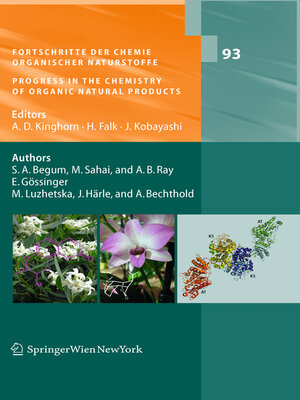Fortschritte der Chemie organischer Naturstoffe / Progress in the Chemistry of Organic Natural Products, Volume 93
ebook ∣ Fortschritte der Chemie organischer Naturstoffe Progress in the Chemistry of Organic Natural Products
By Mahendra Sahai

Sign up to save your library
With an OverDrive account, you can save your favorite libraries for at-a-glance information about availability. Find out more about OverDrive accounts.
Find this title in Libby, the library reading app by OverDrive.



Search for a digital library with this title
Title found at these libraries:
| Library Name | Distance |
|---|---|
| Loading... |
Lignans, by convention, are a group of natural products that are formed by linking two phenylpropanoid units (C C units) by oxidative coupling. Most importantly, in 6 3 a lignan, two (C C units) are bound through the central carbon of their side chains, 6 3 0 i. e. the 8 and 8 positions (1, 2). The occurrence of C C -dimers, linked at sites other 6 3 0 than the 8–8 positions, is also known and these compounds have been termed neolignans (3, 4). As these two groups of compounds have close structural as well as biosynthetic relationships, they are often associated together and incorporated under the general term "lignan" (5). The diverse structural categorization of true lignans and of a few neolignans is presented in Fig. 1. Through the years, several review articles or books covering different facets of lignans, including their ch- istry (6, 7), biogenesis (8), synthesis (9), and biological activities (10) have been published. Enduring research for the investigation of secondary metabolites of plants has evidenced some compounds that are biogenetically related to true lignans or neolignans but bear some features not discerned in conventional lignans. These compounds or groups of compounds have been termed as "non-conventional lignans", and include coumarinolignans, ?avonolignans, and stilbenolignans. The non-conventional lignans, like the conventional ones, have two C C units linked 6 3 together but have additional structural features to place them also under the category of coumarins, ?avonoids, or stilbenes.







